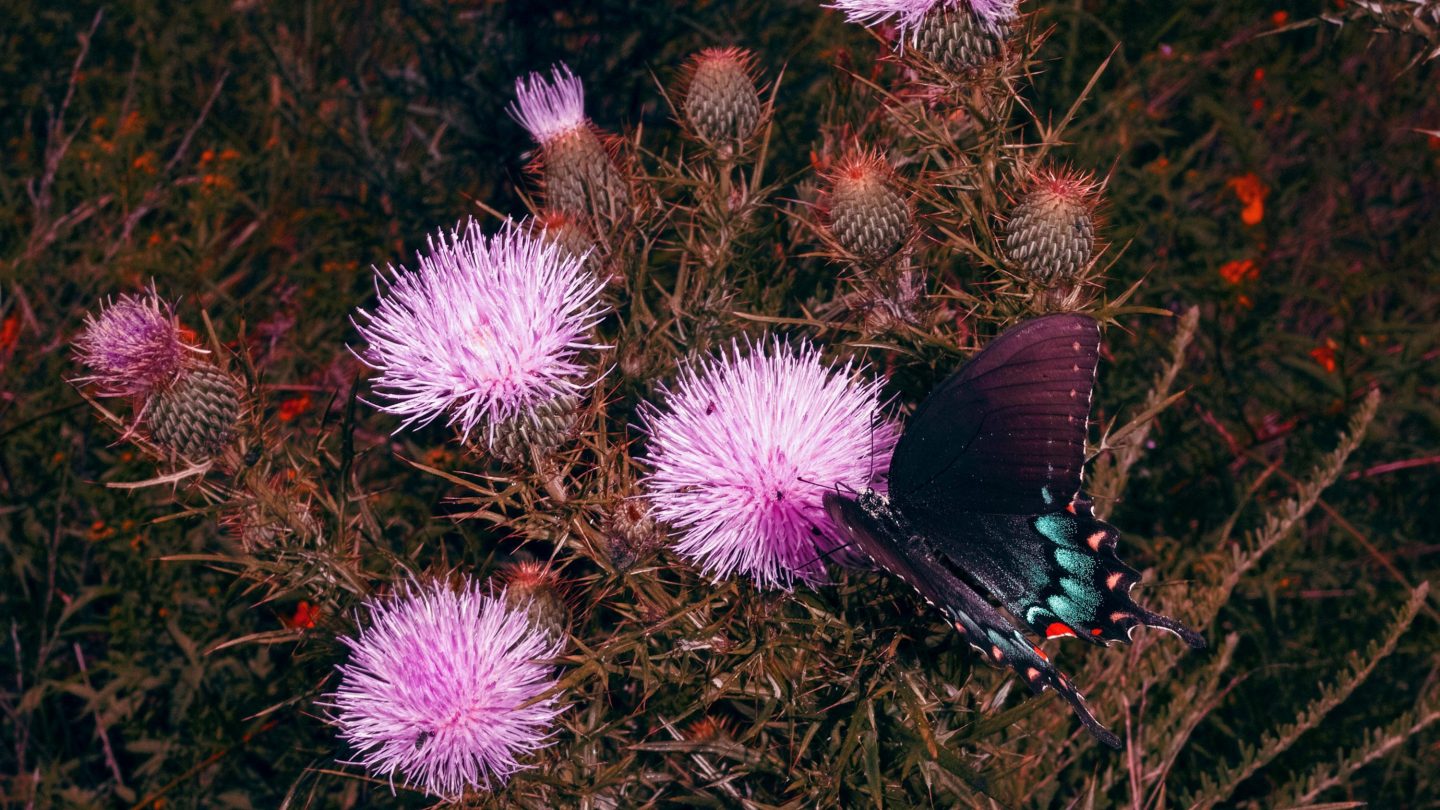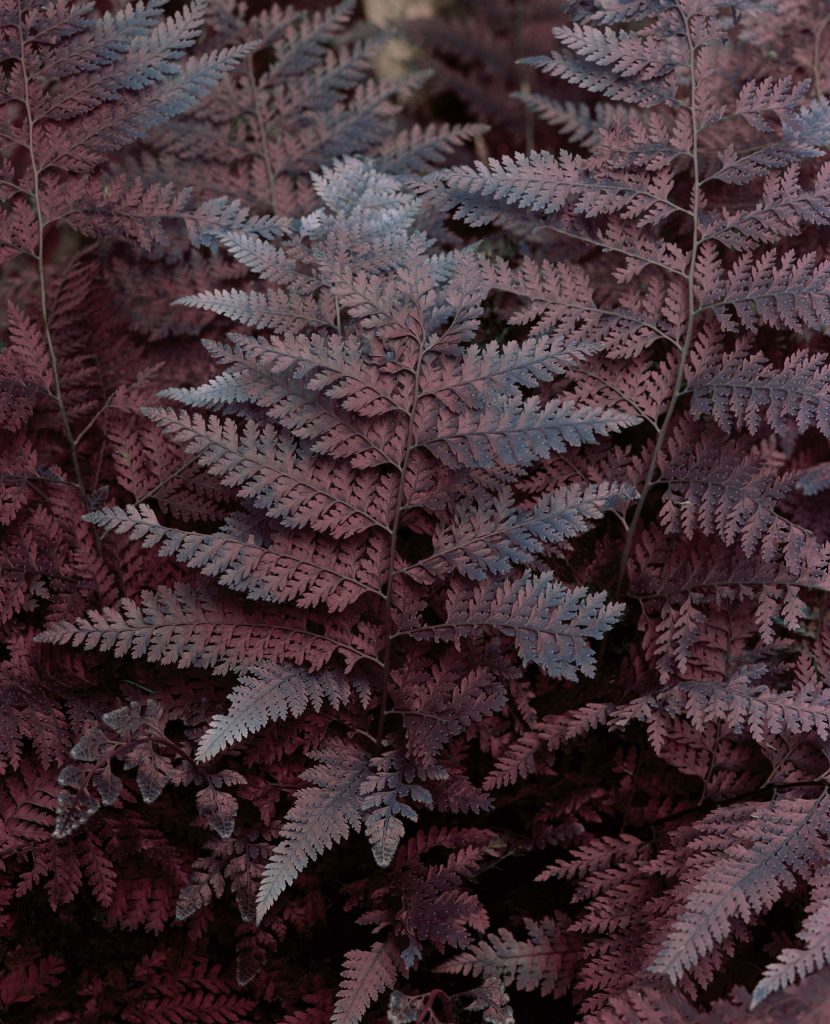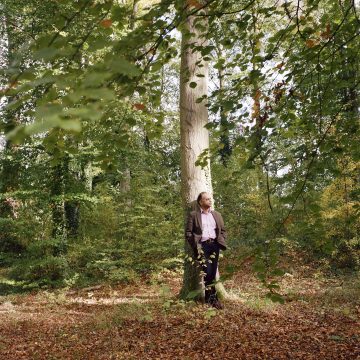
Attack of the Killer Plants
Beware the vegetation. Beneath their seemingly benign, leafy exteriors lies a world of invasion and counter-attack, mutation and adaptation, slow, painful death and – against all the odds – life
Picture it: a lazy spring afternoon in a traditional English country garden. Butterflies flutter, leaves rustle and birds sing. And with its bright pink flowers promising a bounty of sweet nectar, Rhododendron ponticum seems a perfect destination for the well-meaning European honeybee. After all, its bumblebee cousins are enjoying it: what could possibly go wrong? So, it gorges itself – and, just a few hours later, it lies dead among the clover.
We don’t tend to think of plants as dangerous. In fact, most of the time, we don’t think about plants at all. In 1998, two US scientists, James H Wandersee and Elisabeth E Schussler, posited the existence of ‘plant blindness’, which they defined as ‘the inability to see or notice the plants in one’s own environment’. “Show someone a picture of a chicken in a field of plants, and ask them what they see, and they’ll say ‘a chicken’,” says Dr Sebastian Eves-van den Akker, BBSRC David Phillips Fellow and Head of Group at the Department of Plant Sciences. “We joke about it, but it’s quite serious – the animal wouldn’t be there if the plant wasn’t there.”
“We joke about it, but it’s quite serious – the animal wouldn’t be there if the plant wasn’t there.”
Dr Sebastian Eves-van den Akker
But this inability to notice the plants around us every day blinds us to their extraordinary powers. Take Rhododendron ponticum’s killer nectar, which has been described as ‘the world’s first chemical weapon’. In 65BCE, Mithridates VI left tempting hives along the road for the army of Pompey the Great. The ‘mad honey’ produced by the bees who fed on the masses of rhododendrons and their toxic nectar in Turkey left the soldiers in a stupor: easy prey for Mithridates.
Or for sheer horror, says Dr Gitanjali Yadav, you can’t beat the way that tobacco plants counter their chief enemy, the hornworm. “They release phytochemicals to invite the parasitic braconid wasps to tackle the hornworm,” she explains. “The female wasp arrives, but it doesn’t eat the hornworm. Instead, it lays its eggs inside the hornworm, which in turn hatch inside its skin. The larvae grow, chewing through the skin, feeding on the body of the living hornworm. It’s the worst kind of retribution you can imagine!”

The Novel Weapons hypothesis
It sounds gruesome, but put in the context of survival, it makes a lot of sense. The tobacco plant is, after all, only acting in self-defence, and the braconid wasps, being larval parasitoids, would have done it anyway. Rhododendron ponticum’s toxic nectar makes it a profoundly successful invasive species, killing off bees that pollinate other plants while keeping its own pollinators alive – behaviour explained by the chilling sounding NWH: the Novel Weapons (or Chemical Weapons) hypothesis. “Some invasive plants are able to succeed in a new region or habitat because they can make novel phytochemicals that are allelopathic or antimicrobial. These toxins can help overcome or even decimate other local native species,” explains Yadav, who holds a lectureship established by the University in collaboration with the Government of India Department of Biotechnology.
“I consider plants one of the most advanced forms of life in terms of their ability to communicate.”
Dr Gitanjali Yadav
One suspects, sometimes, that we need plants more than they need us. After all, they support all the biological material on our planet. And we need insight into how and why plants do what they do, because big challenges lie ahead, as Professor Alison Smith, Head of the Department of Plant Sciences, points out. According to the UN, the world’s population is growing by 83 million people each year. A third of the world’s arable land has been lost to erosion and pollution in the last 40 years, while climate change, says Smith, will also impact on our ability to grow our current crops. “Plus, all our fossil fuels are from organisms which were photosynthesising, but a long time ago. We are using them up rather quickly, so it would be a good idea to find other ways of using existing organisms.”

Electric algae and the good parasite
Algae, in particular, have considerable potential. “Algae are much more diverse than plants, and much cleverer,” says Smith. “Many of them grow really fast and they have interesting behaviour – some of them are highly motile. “Most importantly, they carry out half the world’s photosynthesis and production of oxygen, despite having only a fraction of the biomass of land plants. It’s often said that algae are a type of plant, but actually it’s the other way round: plants evolved from one group of green algae, so it is plants that are actually a type of algae.”
Researchers from the departments of Biochemistry, Chemistry and Physics have recently collaborated on a project to design algae-powered fuel cells. The cells exploit the fact that algae photosynthesise to convert light into electric current – which can then be used to provide electricity. Smith’s own research is examining how algae could be used to produce plant compounds that have medicinal potential.
“Many of these compounds are difficult to get directly from the plants that make them because the plants make them in small quantities – or grow in remote locations,” she explains. “Often their supply is limited. You can’t control how much they make, and you can’t necessarily get the compounds pure. These molecules are complex, so you can’t make them in the lab using chemical synthesis. But you can generate organisms in the lab to produce them instead.”
Her method involves introducing genes encoding plant enzymes into algae, either by ‘shooting’ it in, with its DNA coated on to gold particles, or by electroporation – where the cells are given an electric shock. “This is a random process, and we have to screen lots of colonies to find the ones we want,” she says. “We have just started to establish gene-editing technologies in the laboratory, and we are hopeful that we can be more precise in future so we can generate the strains we want more directly.”
The cells exploit the fact that algae photosynthesise to convert light into electric current – which can then be used to provide electricity.
But plants need our help, too. They face an endless struggle for survival: not just against manmade threats but also other plants, competing constantly for water and sunlight. And then there are the multitude of parasites and pathogens that are ranged against them – locked together in an arms race. Take the parasitic nematode worm. It lies quietly in the soil for years until a potato is planted. Then, it wakes.
“It manipulates the potato plant’s development, forcing it to grow a new pseudo-organ in the root,” explains Eves-van den Akker. “Once the potato has grown this new tissue, the worm eats it. It’s a good parasite, though. It won’t kill its host. It causes damage not just by eating the pseudo-organ but also by amplifying other problems. Above ground, the plant might look as if it’s stressed by drought or chlorosis, when it goes yellow. The only way you can identify it is to dig it up – and farmers are particularly reluctant to dig things up before harvest.” Once a field has been infected, it’s recommended not to grow potatoes there for another eight years.
Eves-van den Akker says, at the moment, his research is concentrating on the fundamentals of how the worm does this – and his team has just had a breakthrough. For the first time, they have identified and opened what they call the nematode’s ‘toolbox’ – a salivary gland from where it secretes its molecules into the host plant. “There’s at least one species of nematode for every major crop of the world, so you can make a pretty strong case to explore any aspect of that biology that may, one day, lead to a solution.”

Dialling the wrong carbon number
And Yadav, too, stresses that she is on the side of the plants. She spent her childhood in and around the sacred groves of north-east India, where religious traditions have created pristine havens of biodiversity. Plants were an integral part of her life, from walks with her mother looking for rare orchids growing in crumbling colonial bungalows, to counting fern-fronds with her sisters. Now, as a specialist in comparative genomics and phytochemistry, she’s working towards making plants more efficient producers.
“Green plants harvest sunlight and, in the process, they split water and fix atmospheric CO2 into organic carbon, which in turn helps them grow and create more biomass,” she explains.
A third of the world’s arable land has been lost to erosion and pollution in the last 40 years
“This process requires an enzyme called RuBP Carboxylase Oxygenase [RuBisCO], arguably the most abundant protein on Earth. RuBisCO is often considered the interface of living and non-living, since it is the primary carbon-fixing enzyme on the planet. All life forms on Earth are made up of organic carbon.”
But RuBisCO’s abundance is linked to its inefficiency in fixing carbon – this is why plants make so much of it to compensate. “And it often gets confused between molecules of CO2 and O2, almost like dialling a wrong number!” says Yadav.
Her group is collaborating with teams led by Professor Howard Griffiths and Professor Julian Hibberd to investigate plants that have evolved innovative carbon concentrating mechanisms (CCMs) to overcome the inefficiency of RuBisCO over millions of years, such as some members of the grass family, and, of course, the ever-efficient green algae. Professor Hibberd is currently studying the unicellular green alga Chlamydomonas reinhardtii, nicknamed Chlamy. Chlamy has evolved a CCM that exists within a tiny compartment, called the pyrenoid. More efficient RuBisCO could mean a jump of up to 50 per cent in biomass: an incredible leap for crop productivity and food security.
And, of course, plants are beautiful, enhancing our lives in ways we rarely realise. “I consider plants one of the most advanced forms of life on the planet, all the more so in terms of their ability to communicate, and to recognise other organisms, mediating complex interactions with birds, insects and the environment,” says Yadav. The Nobel prize winner Barbara McClintock has called plants ‘thoughtful’, and Aristotle wondered about their complex inner lives. They are endlessly fascinating. There will always be so many more of their stories to discover.
Find out more about Plant Science at the University of Cambridge, electric algae and plant blindness.
The images on this article are from George Brendan Ko’s photography project A Stranger In Two Worlds. He says: “I remember going to an alien forest preserve in Kula and there was an illustration of an ancient Hawaiian landscape. It looked like another world with species of plants that were completely foreign to me because they were either extinct or endangered and rare to encounter.”







